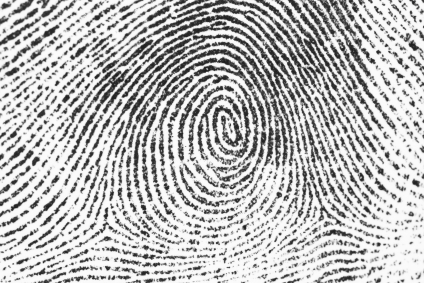It was reported that earlier this year the Metropolitan Police are being kitted out with mobile fingerprint scanners that can detect suspects within two minutes, writes Nicholas Dent.
- According to the Evening Standard, some 350 scanners are being used in police response cars to carry out roadside checks on people’s identities in 15 London boroughs. They checks the print against a database held on the Police National Computer. According to the Standard report, officers recently stopped a Romanian man and the identity he gave differed from his fingerprint identification. Police raided his home and arrested several other Romanian nationals for immigration offences.
- It was reported yesterday by the BBC News that scanners have helped Midlands Police identify more than 2,200 people on the spot since August. About 70 scanners are being used by police teams in the force area. The number of people being brought in to custody to confirm their identity has gone down from about 130 a month to 25.
- Nicholas Dent is a solicitor in the criminal defence team at Hodge Jones & Allen
Recent legislation permits the use of a mobile finger printing device to check the National Fingerprint Database to ascertain the identity of an individual away from the police station. The police suggest that this will allow for on-the-spot identification which may assist in bringing offenders to justice. It may also assist the Police in establishing whether an individual has the correct immigration status.
Yet, the privacy and liberty of individuals could be significantly infringed the use of these powers. The availability and use of these devices may provide an additional incentive for the Police to make speculative arrests so that more fingerprints are held on the Database.
Legal Framework
The Serious Organised Crime Act 2005, Section 117 introduced an amendment to Police and Criminal Evidence Act 1986, Section 61 permitting the taking of fingerprints before a suspect is arrested. In effect, this means that that the taking of fingerprints can take place away from the station and on the street. Section 117 provides little guidance, but it does make clear that a person’s finger prints may be taken by a constable without consent where:
- the constable reasonably suspects that the person is committing or attempting to commit an offence, or has committed or attempted to commit an offence; and
- either of the two following conditions are met:
i. the name of the person is unknown to, and cannot be readily ascertained by, the constable; or
ii. the constable has reasonable grounds for doubting whether a name furnished by the person as his name is his real name.
Further guidance for the operation of this provision is provided in Code D of the Police and Criminal Evidence Act 1984 (as amended). The code suggests that a constable may arrest, without warrant, a person who fails to comply with the requirement of fingerprint analysis and that reasonable force may be used for this purpose.
The code does offer some protection to individuals, requiring that a constable establish certain pre-requisites before the power can be exercised. Where the fingerprints are to be taken without consent, namely, that a constable is required to explain:
- the reason their fingerprints are to be taken;
- the power under which they are to be taken; and
- the fact that the relevant authority has been given (if required for obtaining fingerprints whilst a suspect is on bail, where a suspect has been given a police caution or reprimand or where a person has been convicted of an offence outside England and Wales and that offence would be a qualifying offence, for the purposes of PACE 1986.)
Furthermore, where fingerprints are taken with or without consent at a police station, or elsewhere, the person must be informed of the following:
- that their fingerprints may be subject of a speculative search against other fingerprints;
- that their fingerprints may be retained, unless they were taken when the suspect was not arrested, when they must be destroyed after they have been checked.
Reasonable suspicion
It is easy to contemplate how this legislation and handheld devices can assist the police in identifying individuals and possibly in apprehending offenders. However, it is also apparent that the use of such powers could be used in improper circumstances. The concern is that these devices may be used by the police on a purely speculative basis and in situations where it could not be said that reasonable suspicion really arises. After all, the threshold of ‘reasonable suspicion’ is low.
It is often easier for officers to justify reasonable suspicion retrospectively, rather than contemporaneously. In addition, constables now have the power of arrest people for non-compliance with a finger printing request. As a consequence, police officers may be able to persuade individuals to comply under the threat of arrest where, when viewed objectively, reasonable suspicion does not arise. This means speculative searches against the fingerprint databases could be made as a matter of routine during the course of stop and searches.
Ordinarily, where a constable has reasonable suspicion that an individual has been involved in the commission of a criminal offence and there is a valid identifiable ground of a necessity for arrest (under PACE Section 24 and Code G), a constable may arrest an individual. One of the necessity criteria listed in Code G is to ascertain the name and identity of a suspect. Clearly, this would only be justifiable where, having been given an opportunity to do so, the suspect is unable to or is unwilling to identify himself to the satisfaction of the Constable.
Prior to the inception of this power, if an individual was arrested following reasonable suspicion of the commission of an offence, and in order to ascertain the identity of a suspect, the arrest would have to be justified to a custody sergeant on arrival at a police station. Under the previous law and guidelines, constables would be wary of arresting suspects in situations where they simply wish to ascertain the identity of an individual. In most cases this could be achieved by less intrusive means than arrest.
However, the use of mobile fingerprinting allows constables to be able to establish the name and identity of an individual using a measure short of arrest. While the police may argue that this is more proportionate than arrest (and in some cases, it may be), it is clear that it is open to abuse. The threat that may be made by officers is that if the suspect does not comply, then he or she may then be arrested. Yet the threat of this may be enough to persuade a suspect to comply. By contrast, before the implementation of street fingerprinting it would have been rare for constables to arrest solely for the purpose to ascertain identity.
The threat of arrest for failing to provide a form of identification may also be seen as a significant erosion of a suspect’s right to silence and an indirect pressure to comply with the requests of Police Officers. In effect, suspects are now placed in a position where they are required to comply with the request of police officers, or they may be arrested and reasonable force may be used. Suspects have been historically afforded a right to silence, and following Rice v Connelly [1966] 2 All ER 649, there is no general requirement to comply with the demands of a police officer. In this case, Lord Parker stated that:
‘…every citizen has a moral duty or, if you like, a social duty to assist the police, there is no legal duty to that effect, and indeed the whole basis of common law is that right of the individual to refuse to answer questions put to him by persons in authority.’
As such, this amendment is a significant departure from the common law position identified in Rice v Connelly.
What can realistically be achieved by comparison with the fingerprint database is questionable. Even in cases where there is a match, it will simply confirm the identity of a suspect if they have previously been arrested; charged or convicted of a recordable offence. This should not then provide a sufficient ground for arrest in itself.
The practice of identifying those with criminal records when police speak to them on the street may lead to reliance on bad character evidence during investigations rather than other evidential considerations. Finally, it is likely that only in very rare circumstances will there be a match against a crime scene where a suspect’s fingerprints have been found. On this basis, it appears that once again civil liberties are being eroded only to produce another tool for police to speculatively demand information and detain individuals, rather than a capability which will meaningfully enhance law enforcement.








